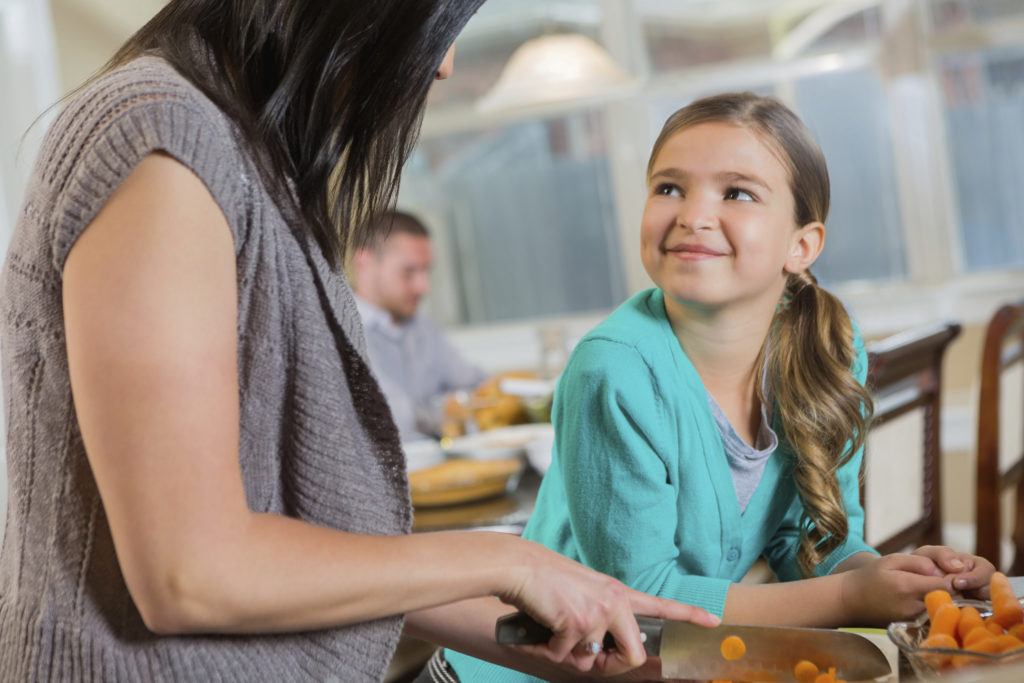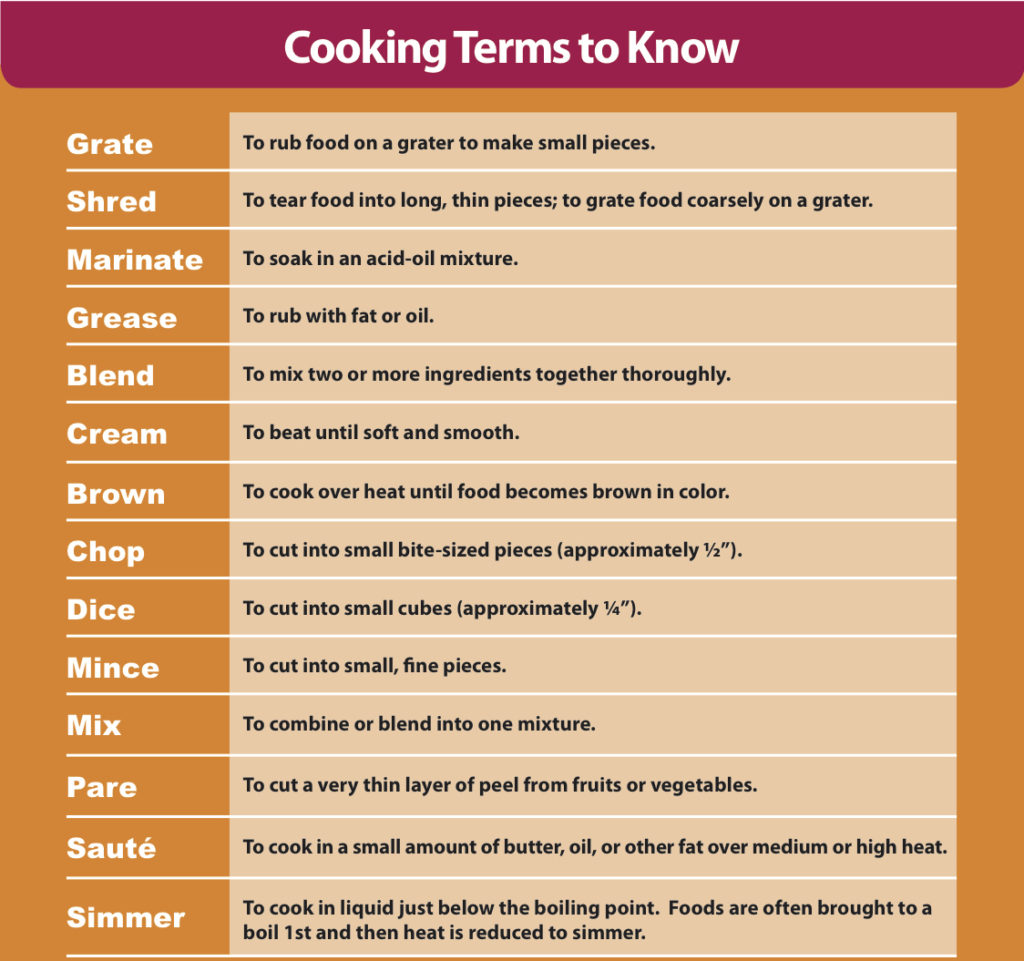
One of the best things about cooking at home is that you have total control over what goes into your meal. It gives you the flexibility to change recipes to fit your family’s specific tastes, and to help you meet your nutrition goals. Here are a few basic tips you should know to improve your cooking skills.
Knife Skills
It’s important to know how to use kitchen knives safely and efficiently. When you cook with fresh, whole foods, chopping ingredients is often necessary. Here are some important terms you should know.

Remember to practice safe knife skills as well.

- Make sure your knife and cutting board are sanitized. Place a towel under the cutting board to make sure it doesn’t slip.
- Peel food, if needed. Throw away the peels and keep the cutting board clean and clear.
- Hold the knife close to the blade with your dominant hand, with your fingers wrapped securely around the handle for the best control.
- Place your other hand on the food you will be cutting. Curl your fingers like a claw and keep your thumb and pinky finger behind your other fingers.
- Do not lift the front of the knife off the cutting board.
- Use a rocking, circular motion to slice the food. Go slowly at first until you’re more comfortable. Push the knife forward as you lower it and slice.
- Cut food in half lengthwise for long foods, like cucumbers. Cut food into quarters for round foods, like tomatoes.
- Slice foods by cutting quarters into sticks.
- Cube foods by cutting sticks into cubes. Try to make cubes the same size.
Measuring Ingredients
All recipes require you to measure your ingredients. It’s important to measure ingredients accurately for your dish to turn out right, especially if you’re baking.

Food Safety & Food Thermometers
Handling food safely and making sure your food is at the right temperature is important for your health. There are three ways to thaw meat safely: In the fridge, in the microwave, in cold water and in the microwave. Any other methods you may have heard of put you at risk of getting sick from foodborne bacteria.
There is only one way to know your food has reached a safe temperature – by using a food thermometer. Measuring the temperature of your meat with a thermometer helps you avoid overcooking your meat as well as undercooking it.
Cooking Methods
If you’re interested in trying a new cooking method, make sure you pick ingredients that will cook well for that style. You can’t bake a cake on the stovetop, after all! Here are some of the ways you can prepare foods, and which foods would work best.
Boiling
To boil a dinner, you simply heat a pot of water and place your food in the water to cook. Many types of meat and dense vegetables can be boiled. Pot roasts, soups, and stews are dinners that require boiling.
Baking & Roasting
Baking and roasting are both methods that cook food using hot, dry air, usually in an oven. Baked goods like bread or muffins, casseroles, or roasted veggies and meat are cooked in the oven.
Sautéing
Sautéed foods are cooked in pans on the stovetop using fat, like olive oil. Sautéed vegetables is a popular side dish.
Slow cooking
Simmer foods at a lower temperature to cook them over a longer period of time in a slow cooker. It’s best done with dinners you might boil. However, slow cooking allows you to leave the slow cooker unattended. Many families find it convenient to prepare dinner in the morning, and let it cook over the course of the day while everyone is busy at work or school.
